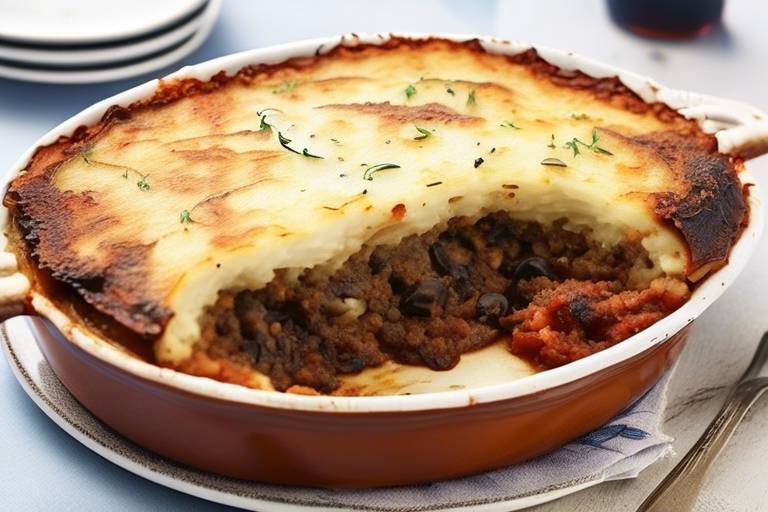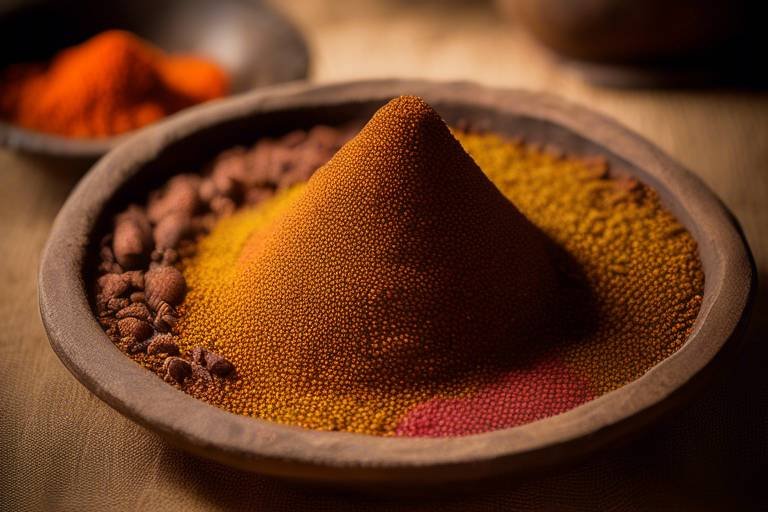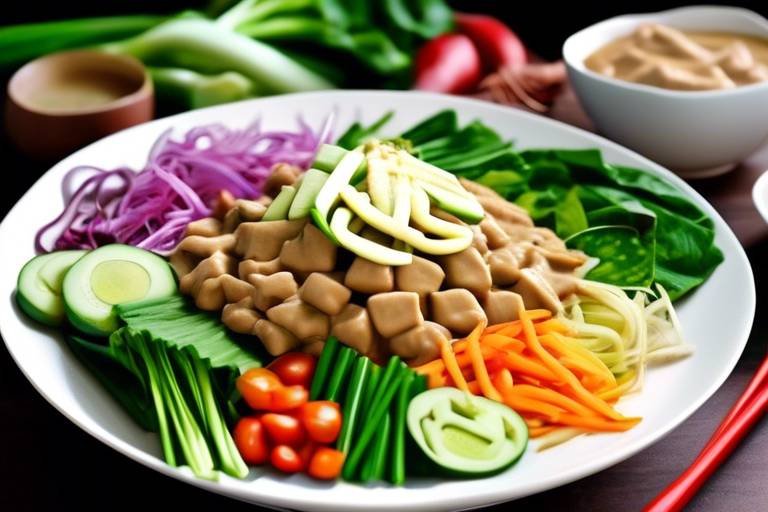How to Make Classic Greek Moussaka
Are you ready to embark on a culinary journey to the heart of Greece? Let's dive into the art of making the classic Greek Moussaka, a dish that embodies layers of flavor and tradition. This iconic dish is a delightful combination of eggplant, meat sauce, and creamy Bechamel sauce, baked to perfection. Get your apron on and let's start creating a mouthwatering Moussaka that will transport your taste buds to the Mediterranean.
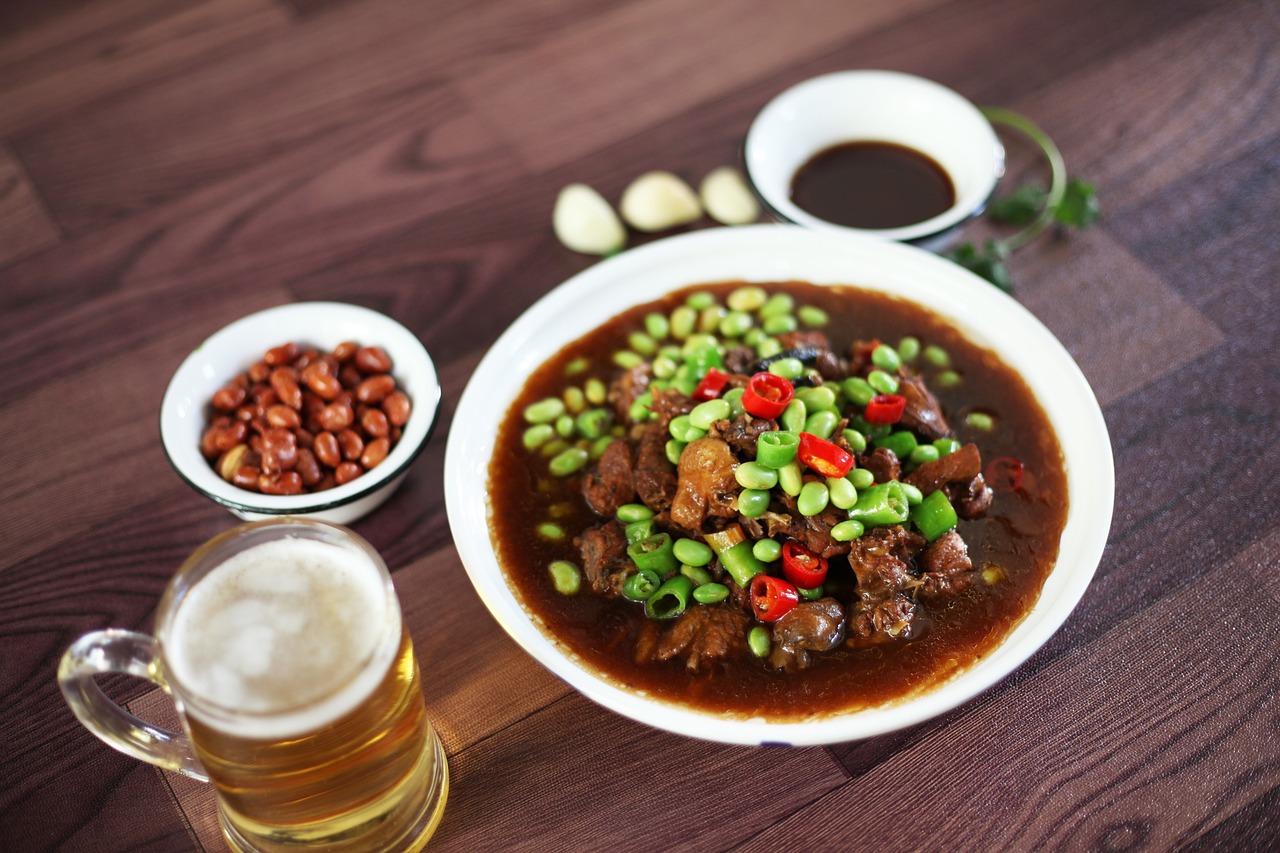
Ingredients
Learn the traditional recipe and step-by-step instructions to create a delicious Greek Moussaka dish at home.
When it comes to making a classic Greek Moussaka, the key lies in selecting the right ingredients that will harmonize perfectly to create a flavorful dish that will transport you to the streets of Greece. Here are the essential components you will need:
| Ingredients | Quantity |
|---|---|
| Eggplants | 2 large |
| Ground beef | 1 lb |
| Onion | 1 large |
| Garlic | 2 cloves |
| Canned tomatoes | 1 can (14 oz) |
| Red wine | 1/4 cup |
| Bay leaves | 2 |
| Cinnamon | 1 tsp |
| Ground nutmeg | 1/2 tsp |
| Butter | 4 tbsp |
| All-purpose flour | 4 tbsp |
| Milk | 2 cups |
| Egg | 1 |
| Salt and pepper | To taste |
These carefully selected ingredients are the building blocks of an authentic Greek Moussaka that will tantalize your taste buds and leave you craving for more.

Preparation
When it comes to preparing a classic Greek Moussaka dish, the key lies in the meticulous preparation process that sets the foundation for a mouthwatering final result. Before diving into the intricate layers and flavors of this beloved dish, it's essential to gather all the necessary ingredients and equip yourself with a clear understanding of each step involved.
One of the fundamental aspects of preparing Moussaka is the careful slicing of the eggplant, a step that can greatly impact the texture and overall taste of the dish. Ensuring uniform slices of the eggplant not only enhances the visual appeal of the Moussaka but also allows for even cooking throughout. Taking the time to properly salt and drain the eggplant slices can help remove excess moisture, resulting in a firmer texture once baked.
Next up is the creation of the flavorful meat sauce, a crucial component that adds depth and richness to the layers of the Moussaka. Combining ground meat with aromatic spices, onions, and tomatoes, the meat sauce serves as a hearty foundation that complements the other elements of the dish. Cooking the meat sauce until it reaches a thick and savory consistency is key to infusing the Moussaka with robust flavors.
Another essential element of Greek Moussaka is the velvety Bechamel sauce that crowns the dish with its creamy goodness. Achieving the perfect Bechamel sauce involves mastering the delicate balance of butter, flour, milk, and nutmeg to create a smooth and luscious topping. The Bechamel not only adds a luxurious finish to the Moussaka but also helps bind the layers together for a harmonious blend of flavors.
Assembling the Moussaka involves a meticulous layering process where the eggplant slices, meat sauce, and Bechamel sauce come together to create a symphony of flavors and textures. Building each layer with care and attention ensures that every bite is a delightful combination of tender eggplant, savory meat sauce, and creamy Bechamel.
Once the Moussaka is expertly layered, it's time to bake it to perfection, allowing the flavors to meld together and the top to achieve a golden brown hue. The baking process is crucial in ensuring that all the components are cooked through and the flavors are fully developed, resulting in a satisfying and indulgent dish that is sure to impress.
With the Moussaka fresh out of the oven, it's time to focus on the final touches of serving and garnishing. Whether you choose to sprinkle fresh herbs, drizzle olive oil, or add a sprinkle of cheese, garnishing your Moussaka with care adds a touch of elegance and flavor that elevates the overall dining experience.
As you embark on your culinary journey to create a classic Greek Moussaka, remember that attention to detail and a passion for quality ingredients are the keys to success. By following each step of the preparation process with precision and care, you'll be rewarded with a homemade dish that captures the essence of Greek cuisine and delights the senses.
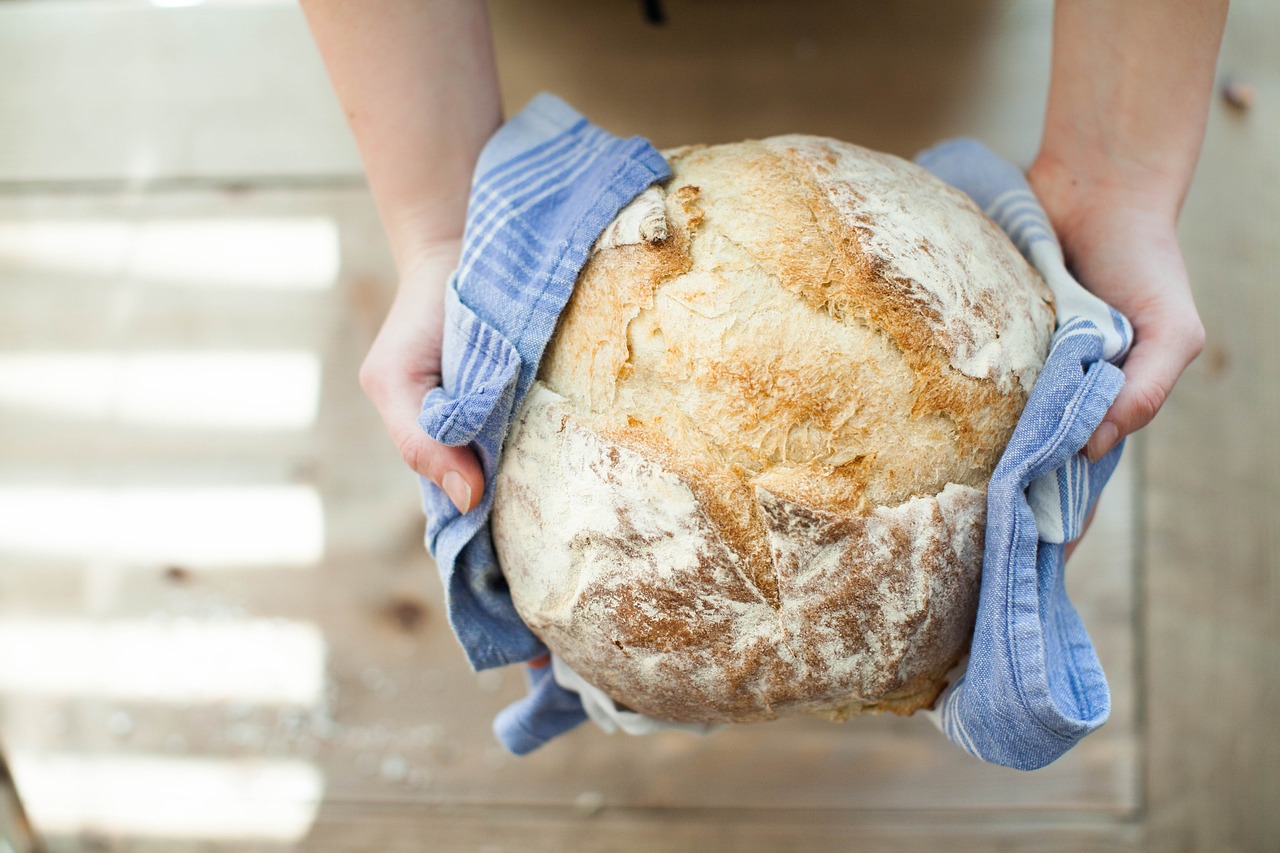
Eggplant Slicing
When it comes to preparing a classic Greek Moussaka, one of the essential steps is mastering the art of eggplant slicing. The eggplant serves as a key ingredient in this traditional dish, adding a unique texture and flavor to the layers of Moussaka.
To start the eggplant slicing process, you will need to carefully wash and dry the eggplants. Choose firm and fresh eggplants for the best results. Using a sharp knife, carefully remove the stem of the eggplant and then proceed to slice it into even, thin rounds. The thickness of the slices is crucial to ensure that the eggplant cooks evenly and blends seamlessly with the other components of the Moussaka.
Some cooks prefer to peel the skin off the eggplant before slicing, while others leave it on for added texture and flavor. The decision to peel or not to peel is a matter of personal preference, so feel free to experiment and see which option you prefer.
Once you have sliced the eggplants, you may choose to salt them and let them sit for a while to draw out any bitterness. This step is optional but can help enhance the overall taste of the dish. After salting, rinse the eggplant slices thoroughly and pat them dry before using them in the Moussaka.
When layering the Moussaka, the sliced eggplants are typically fried or baked before being assembled in the dish. Frying the eggplant slices in olive oil adds a rich flavor and crispy texture, while baking them in the oven can result in a lighter, healthier version of the dish. Whichever method you choose, make sure the eggplant slices are cooked until they are tender and slightly golden brown.
Mastering the art of eggplant slicing is a crucial step in creating a delicious and authentic Greek Moussaka. By paying attention to the details and techniques involved in this process, you can elevate the flavors and textures of this classic dish to new heights.

Meat Sauce
When it comes to creating a delicious Greek Moussaka dish, the plays a crucial role in adding flavor and depth to the dish. This savory and aromatic sauce is a key component that enhances the overall taste of the Moussaka.
To prepare the , you will need a combination of ground meat, onions, garlic, tomatoes, herbs, and spices. The meat is typically cooked with the onions and garlic until browned and then simmered with tomatoes and a blend of Mediterranean herbs such as oregano and cinnamon.
The secret to a flavorful lies in the slow cooking process, allowing the ingredients to meld together and develop a rich, savory taste. The sauce should be well-seasoned with salt and pepper to enhance the flavors of the meat and spices.
Some variations of the may include the addition of red wine for depth of flavor or a touch of honey for a hint of sweetness. Experimenting with different herbs and spices can also elevate the taste profile of the sauce, making it uniquely yours.
When layering the Moussaka, the is typically spread evenly over the sliced eggplant, creating a hearty and satisfying layer that pairs perfectly with the creamy Bechamel sauce. The combination of flavors from the meat, eggplant, and Bechamel creates a harmonious blend that is both comforting and indulgent.

Bechamel Sauce
When it comes to making a classic Greek Moussaka, one of the essential components that elevates the dish is the rich and creamy Bechamel sauce. This velvety sauce not only adds a luxurious texture to the Moussaka but also brings a delightful balance to the layers of flavors within the dish.
To prepare the Bechamel sauce, you will need simple yet crucial ingredients such as butter, flour, milk, eggs, and nutmeg. The key to achieving a smooth and luscious Bechamel lies in the technique of creating a roux, a mixture of butter and flour cooked together to form a thick base for the sauce.
Start by melting butter in a saucepan over low heat, being careful not to let it brown. Once the butter is melted, gradually add in the flour, stirring constantly to form a smooth paste. This step is crucial in ensuring that the Bechamel sauce has a silky texture without any lumps.
Next, slowly pour in the milk while whisking continuously to incorporate it into the roux. The milk should be added gradually to prevent clumping and to achieve a consistent thickness in the sauce. As the mixture simmers and thickens, the Bechamel will start to take shape, becoming velvety and rich.
For an extra touch of flavor, beat eggs and slowly add them to the sauce, whisking vigorously to blend them in smoothly. The eggs help to bind the sauce and give it a slightly custard-like consistency, adding a depth of flavor to the overall dish.
To enhance the aromatic profile of the Bechamel sauce, a pinch of nutmeg can be sprinkled into the mixture, providing a subtle warmth and complexity to the sauce. Nutmeg complements the savory elements of the Moussaka, creating a harmonious blend of flavors that will tantalize your taste buds.
Once the Bechamel sauce reaches a creamy and thick consistency, it is ready to be poured over the assembled layers of eggplant and meat sauce in the Moussaka. The final touch of Bechamel crowns the dish, creating a golden crust when baked to perfection in the oven.
Mastering the art of making Bechamel sauce is key to achieving an authentic and mouthwatering Greek Moussaka that will impress your family and friends. The velvety texture and rich flavor of the Bechamel elevate this classic dish to a whole new level, making it a standout favorite among Mediterranean cuisine lovers.

Layering and Baking
Layering and baking are crucial steps in creating the perfect Greek Moussaka dish. The layering process involves alternating between the cooked eggplant slices, meat sauce, and Bechamel sauce to build a harmonious combination of flavors and textures. Each layer adds depth and richness to the dish, creating a symphony of tastes that explode in your mouth with every bite.
Start by greasing a baking dish with olive oil to prevent sticking and ensure a golden crust on the bottom of the Moussaka. Begin the layering process by placing a single layer of cooked eggplant slices at the bottom of the dish. The eggplant acts as a sturdy base that soaks up the savory flavors of the meat sauce and Bechamel.
Next, spoon a generous portion of the meat sauce over the eggplant layer, spreading it evenly to cover the surface. The meat sauce, typically made with ground lamb or beef, onions, garlic, and aromatic spices, provides a hearty and flavorful element to the Moussaka.
After the meat sauce, pour a thick layer of creamy Bechamel sauce over the meat, ensuring it covers the entire surface. The Bechamel sauce, made from butter, flour, milk, and nutmeg, adds a velvety texture and a rich taste that binds the layers together.
Repeat the layering process with another round of eggplant slices, meat sauce, and Bechamel sauce until you reach the top of the baking dish. Finish off the Moussaka with a final layer of Bechamel sauce, spreading it smoothly to create an irresistible golden crust when baked.
Once the layering is complete, place the Moussaka in a preheated oven and bake at a moderate temperature until the top is golden brown and bubbling. The baking process allows the flavors to meld together, creating a cohesive dish that is both comforting and satisfying.
After baking, allow the Moussaka to rest for a few minutes before serving to ensure that the layers set and the flavors intensify. Garnish with a sprinkle of fresh herbs, such as parsley or oregano, to add a pop of color and freshness to the dish.

Serving and Garnishing
When it comes to serving and garnishing your homemade Greek Moussaka, presentation is key to delighting your taste buds and eyes simultaneously. Picture this: a piping hot Moussaka dish fresh out of the oven, the aroma wafting through the air, ready to be served to eager diners. The first step in this culinary journey is to carefully portion out the Moussaka into individual servings, ensuring each plate receives a generous helping of all the delicious layers.
Now, let's talk garnishes - the final touch that elevates your Moussaka from good to gourmet. A sprinkle of fresh parsley or oregano on top adds a pop of color and a burst of freshness to the dish. Alternatively, a dollop of tangy Greek yogurt or a drizzle of olive oil can provide a creamy and luxurious finish to your Moussaka masterpiece.
For a visually appealing presentation, consider serving your Moussaka in individual ramekins or baking dishes, allowing each portion to stand out on its own. You can also garnish the dish with a sprinkle of crumbled feta cheese or a few Kalamata olives for a touch of Mediterranean flair.
When it comes to serving, remember that Moussaka is best enjoyed hot and fresh out of the oven. Pair it with a crisp green salad dressed in a light vinaigrette to balance out the richness of the dish. Whether serving it as a main course or as part of a Greek feast, your homemade Moussaka is sure to impress and satisfy.

Variations and Tips
When it comes to making a classic Greek Moussaka, there are various ways to add your own twist to this traditional dish while still maintaining its authentic flavors. Let's explore some variations and expert tips to elevate your Moussaka game.
If you're looking to switch up the traditional recipe, consider substituting the usual eggplant with zucchini or potatoes. These alternatives can bring a unique texture and flavor profile to your Moussaka, giving it a refreshing twist.
For a lighter version of this hearty dish, you can opt for ground turkey or chicken instead of the traditional beef or lamb in the meat sauce. This variation not only reduces the calorie content but also offers a different taste that can be just as delicious.
To enhance the overall taste of your Moussaka, consider adding a sprinkle of nutmeg or cinnamon to the Bechamel sauce. These warm spices can add a subtle depth of flavor that complements the richness of the dish perfectly.
If you're a fan of cheese, try experimenting with different types such as feta or Parmesan to sprinkle on top of your Moussaka before baking. The cheese will melt into a golden crust, adding a delightful cheesy goodness to every bite.
When it comes to serving and garnishing your Moussaka, a fresh sprinkle of chopped parsley or oregano can add a pop of color and freshness to the dish. These herbs not only enhance the visual appeal but also bring a burst of flavor to each serving.
For those looking to make their Moussaka ahead of time, you can prepare the dish up to the layering stage and refrigerate it overnight. This allows the flavors to meld together, resulting in an even more delicious and cohesive dish when baked.
Remember, cooking is all about experimentation and personal preference. Don't be afraid to get creative with your Moussaka recipe and tailor it to suit your taste buds. Whether you stick to the traditional method or try out these variations and tips, the key is to enjoy the process and savor the end result.
Frequently Asked Questions
- Is Greek Moussaka difficult to make at home?
While Greek Moussaka may seem like a complex dish, with the right ingredients and step-by-step instructions, it can be successfully prepared at home. The key is to follow the recipe closely and take your time with each component.
- Can I prepare Greek Moussaka in advance?
Absolutely! Greek Moussaka is a dish that actually tastes better the next day as the flavors have time to meld together. You can prepare it in advance, refrigerate it, and simply reheat it when you're ready to enjoy a delicious meal.
- What can I serve with Greek Moussaka?
Greek Moussaka is a hearty dish on its own, but it pairs wonderfully with a fresh Greek salad, some crusty bread, or even a side of tzatziki sauce. The combination of flavors and textures will elevate your dining experience.
- Can I freeze leftover Greek Moussaka?
Absolutely! Greek Moussaka freezes exceptionally well. Simply portion out any leftovers into airtight containers or freezer bags, label them with the date, and freeze for up to 3 months. When you're ready to enjoy it again, thaw in the refrigerator overnight and reheat in the oven.

